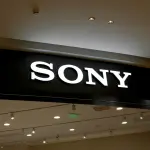
Starting next year, all iPhone models, including the iPhone SE, will have organic light-emitting diode (OLED) displays as Apple moves away from liquid crystal displays (LCDs), Japanese newspaper Nikkei reported on Tuesday, September 3.
OLED displays have recently seen an increase in demand because of their ability to create images with more vivid colors and sharper contrasts. That is possible thanks to the red, blue, and green organic compounds that enable them to emit light on their own, unlike LCDs, which rely on a backlight.
Many television and smartphone creators are already adopting OLED displays as their go-to choice to provide high-definition graphics in their devices—and Apple is no different from them this time.
No more LCDs, no more Japan suppliers
The California-based tech company has already shifted from LCDs to OLEDs with the iPhone X, which debuted in 2017. From then on, the succeeding premium models of its smartphones also made the switch.
Now, Apple has reportedly begun placing orders for OLED panels for the relaunching of the iPhone SE in 2025 and the production of standard-price and Pro models. This move wraps up not only the era of LCDs in the handset but also Apple’s partnership with Japan’s Sharp and Japan Display Inc. (JDI).
Sharp and JDI used to dominate the supply of iPhone LCDs around 2015, accounting for 70% of all displays and delivering 200 million units yearly. However, that number significantly declined to 20 million in 2023 after the smartphone maker began adopting OLED.
Since both Japanese suppliers have no large-scale production of OLED displays for smartphones, their contract with Apple is likely to conclude with the phase-out of old SE models.
However, this loss comes as a win for South Korean and Chinese OLED suppliers. According to Nikkei, Samsung Electronics commands almost 50% of the market for iPhone OLED, whereas Seoul-based LG Display covers around 30% and China’s BOE Technology Group about 20%.
A step back for LCD manufacturers
The uncertain future of LCDs is not only limited to iPhones. UK-based market researcher Omdia said that OLEDs will overtake LCDs by the number of panels shipped for smartphones for the first time this year.
This leaves Japanese manufacturers to take a step back and reassess their business strategies.
After suffering net losses for ten consecutive years due to overproduction, JDI is working on pushing its LCD business for automotive applications. It is also developing energy-efficient OLEDs, though its capacity can still only accommodate Apple Watch and other small devices.
Meanwhile, Sharp has shut down its Sakai plant in Osaka and reduced the capacity at its Kameyama plant in Mie prefecture to scale down its LCD business.





















